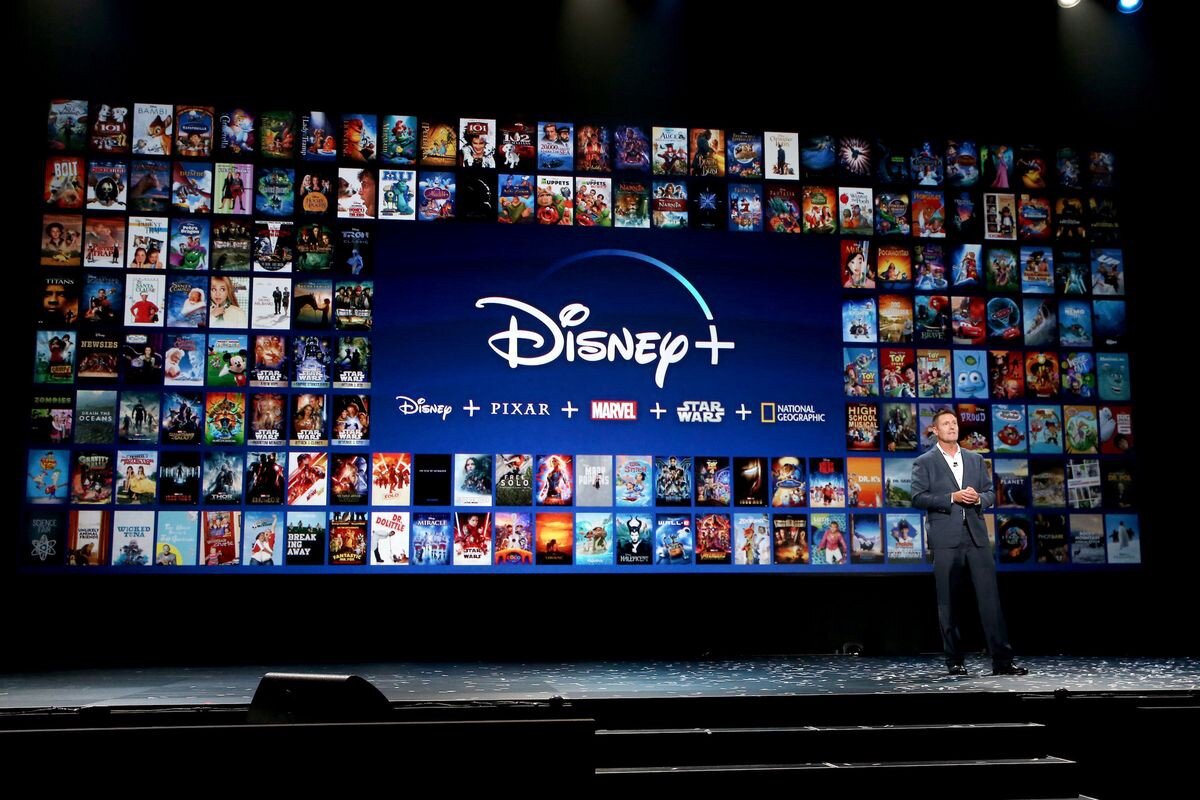Disney’s Future becomes its Present
One of the many companies to face historical challenges as a result of COVID-19, Disney would likely have fallen victim to total collapse if not for the surprising rise of the Disney+ streaming service, the new king of Disney’s magic kingdom.
Over the past decade, Disney has solidified its position in the media and entertainment industry and has consecutively delivered growing revenue and profits. Unfortunately, this seemingly unstoppable rally came to an abrupt end as the world went into lockdown and supply chains disappeared following the global pandemic. In March 2020, Disney officially closed all of its parks and halted its cruise lines globally, losing hundreds of millions, which culminated in the elimination of over 28,000 employees. The company was also forced to postpone several highly anticipated movie releases including Black Widow and shut down consumer product stores globally. On the brink of collapse, Disney found its shining new star, Disney+.
As a result of lockdowns, consumers spent more time at home, resulting in the streaming industry exhibiting explosive growth. Bob Chapek, CEO of Disney, recognized this opportunity and announced a major re-organization of the Walt Disney Company in October 2020. The re-organization seeks to shift the company’s focus to Disney+ and immediately divert the majority of Disney’s resources to aggressively growing Disney+’s market share.
Bob Chapek asserted in Disney’s Q4 earnings call that “the real bright spot has been our direct-to-consumer business, which is key to the future of our company, and on this anniversary of the launch of Disney+ we’re pleased to report that, as of the end of the fourth quarter, the service had more than 73 million paid subscribers.” Disney+’s subscriber growth crushed the analyst expectations of 65.6 million, sending the stock close to its all-time high. Shareholders are also showing great support for Disney’s new strategy with activist investors including Dan Loeb rallying behind Disney’s decision to forgo its January 2021 semi-annual dividend and invest those funds in Disney+.
The need for Disney+ will continue to grow as Disney’s content distributors fall prey to COVID-19 lockdowns and price gauging. Furthermore, the trend of decreasing theatre attendance compels Disney to pursue alternative forms of distribution such as streaming. Pay TV and Cable TV services have also taken a sharp dive as consumers find it unreasonable to watch lengthy advertisements and pay upwards of $150 when streaming services provide ad-free viewing for a fraction of the price.
Competitors such as Warner Media have also jumped on the streaming bandwagon by releasing HBO Max in May 2020. Jason Kilar, CEO of Warner Media, expressed, “because of the gift that is the internet, we have what I believe is one of the greatest opportunities in the history of media,” as Warner Media laid off over 1,000 employees and shifts its focus to the growth and development of HBO Max.
Characterized by razor-thin margins, cost-effective platforms will dominate the streaming industry. Disney has recognized this trend and undercuts rivals such as Netflix at $8.99 and HBO Max at $15 by offering Disney+ at only $6.99.
Furthermore, consumers desire a variety of content, and find it overwhelming to subscribe to several streaming platforms to enjoy this. Disney dissolves this problem by offering a joint subscription of Disney+, Hulu, a subscription video on demand service, and ESPN+, a subscription-based sports streaming platform, for $12.99. This unique bundle pushes customers to Disney as it grants them access to a large variety of content without enrolling in several streaming platforms independently.
Looking to the future, Disney must expand aggressively to capture a significant portion of the extremely competitive streaming market. Competitors are flooding the market as media companies withdraw from third-party platforms and seek to develop their own platforms.
In the future, Disney will also be able to develop a competitive advantage through ESPN+ as Cable TV becomes obsolete. Cable TV viewership declined dramatically in the pandemic, even after the return of live sports, paving the way for ESPN+’s explosive growth. Competitors such as Netflix will be unable to touch the sports streaming market as major sports leagues already locked in contracts with major television networks creating several entry barriers for expanding platforms.
By essentially trading high-paying cable viewers for low-paying streaming viewers, Disney+ is currently burning over $2 billion annually to facilitate growth and development. However, Disney+ can achieve profitability in the future as it will provide unprecedented access to viewership data, allowing Disney to track consumer preferences and develop better targeted content in the future.
By providing a larger content library at a lower price, Disney+ will continue to grow in subscribers and may potentially trump Netflix as the future industry leader. Disney possesses a large amount of original content, including Marvel and Fox. Companies like Netflix have yet to compete with this offering, paving the way for Disney+ to triumph in the streaming wars.
The pandemic-induced closure of movie theatres around the world has provided yet another opportunity for Disney+ to drive the company’s revenues. In the hopes of reviving its new movie launches, Disney pivoted by releasing new movies for an additional fee directly on Disney+, skipping the box office. This route will prove very successful for Disney as it creates yet another source of DTC revenue.
Disney+ has been a lifeline for Disney at a time when COVID-19 has decimated traditional businesses. Launched a little over than a year ago, the streaming service has quickly become an integral component of Disney’s future strategy—even once the pandemic subsides and visitors flock back into its parks and resorts. Given the evolving climate, Disney+ is ought to capture a large share of the streaming market through its legacy original content and low prices.

